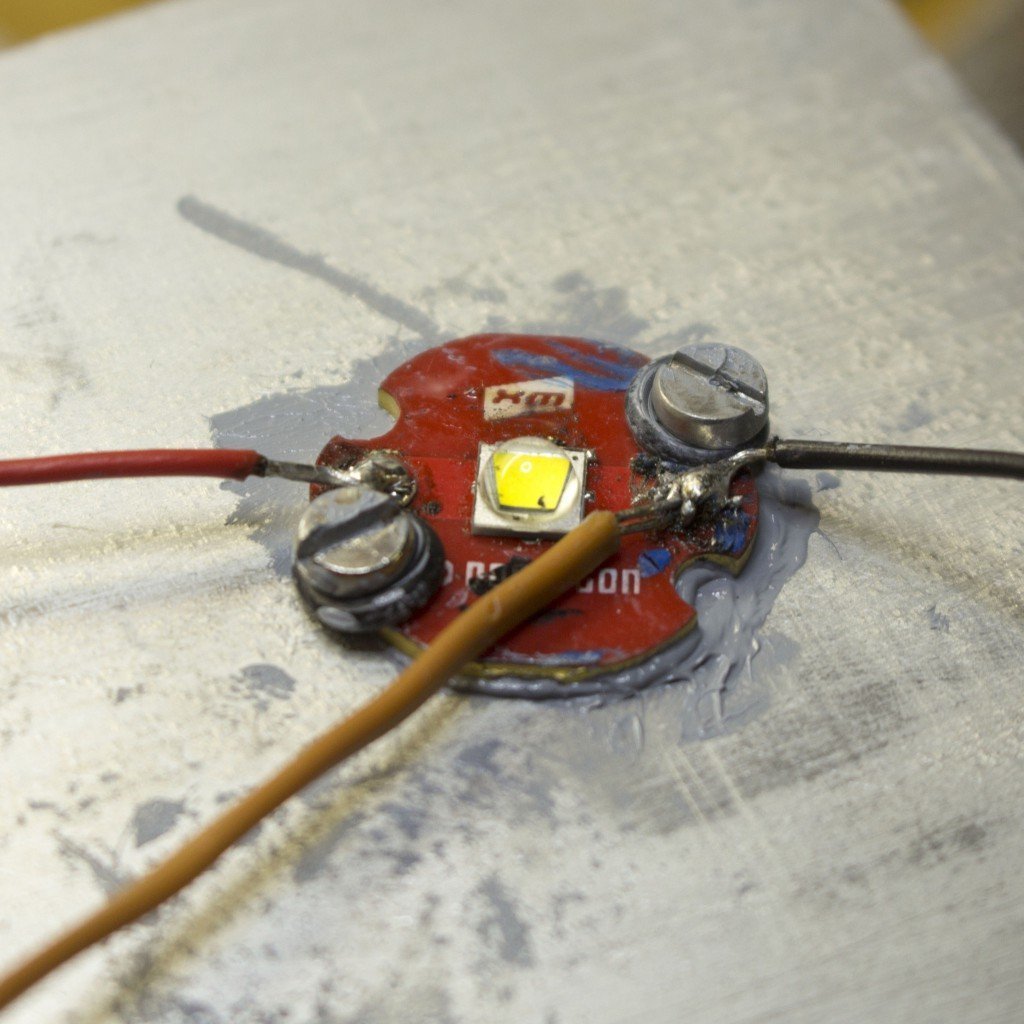
Fake Cree LED's Flood The Market But How Bad Are They Really?
Share

As a local brand of high-performance premium lights, it is not possible to sell a product that will result in large returns. For that reason, it is almost impossible to compete against cheap overrated lights that are so easily available online. Until 2015 customers that bought online from foreign mail order shops most likely also got top end LED's in their low-cost lights. Although the rest of the light left much to be desired. But that has changed middle 2015 with the availability of low-grade clone LED's that look nearly identical to the leading LED manufacturers in the markets. As of 2016, it is highly unlikely to get any cheap "free international shipping" light with an original Cree, Osram or Philips LED's. Regardless if the advert claims the moon and the stars. If you like to know more about how to identify the clone LED's read this.
But the real question remains. How good or how bad are these lookalike LED's really?
We set out to compare some of the clone LED's to their original counterparts. To simplify things we were interested to know how well these LED's convert electrical power to light, this is called Luminous efficacy. Considering temperature is the Achilles heel for LED's, we would also like to know how the Luminous efficacy is effected over a range of temperatures. Notoriously cheap lights do not have good heat conductivity, and that is where you will find Lattice Bright LED's. The first thing we did was to order two Lattice Bright XML2 LED's. The T6 bin was the best the agent could provide. We also asked for natural white (5000-5500K). After they confirmed the sample order we also asked for the same from our Cree agent, Cree XM-L2 T6 5000k. A few weeks later we got the samples. The setup is simple: Using a custom built Isometric sphere we compared the Lattice Bright XML2 output intensity and measured the temperature of the star and the power(Voltage and Current) that was applied. We did the same with the Cree XM-L2 T6 5000k. Before we show you the results here are a few observations and assumptions:- Our Isometric sphere is not calibrated. We used the Cree XM-L2 T6 Datasheets at 50deg as the reference point. Power and Lumens were calibrated accordingly
- Voltage was measured at the power supply, not on the star of the LED. There were some drops in the wires but we compensated for that in the final results.
- Noctigon did not provide the LED's. We just used their copper stars to give each LED the best chance to perform.
- The equipment is not laboratory equipment and these results should be considered for general information.

Test Setup. 1 Custom made Isometric sphere, Lux meter, Digital power supply, Multimeter(Temp), OLD CPU Heatsink

The temperature was measured on the star as close as possible to the LED.
The testing results:
The first thing that was very noticeable was the colour difference between the two lights. The Lattice Bright XML2 T6 was horrific blue. The fact that we asked for natural white and got royal bluish white LED's should not be a big surprise considering the company we are dealing with.

Cree XM-L2 T6 5000k

Lattice Bright XML2 T6
The histogram shows clearly that the Lattice Bright LED's are producing a huge amount of high spectrum blue light. In contrast, the overlap on the Cree lights is excellent and would produce very good Colour rending index. 

| Cree XM-L2 T6 5000k | Lattice Bright XML2 T6 | Deviation | |||||||||
| Temp© | Lumen | V | A | Lumen/W | Lumen | V | A | Lumen/W | |||
| 35 | 861.6 | 3.48 | 2.36 | 109.0 | 800.8 | 3.46 | 2.38 | 101.0 | 108% | ||
| 40 | 857.1 | 3.43 | 2.36 | 110.0 | 781.6 | 3.45 | 2.38 | 98.9 | 111% | ||
| 45 | 848.8 | 3.43 | 2.36 | 109.0 | 771.9 | 3.45 | 2.39 | 97.3 | 112% | ||
| 50 | 832.8 | 3.39 | 2.36 | 108.2 | 765.5 | 3.45 | 2.39 | 96.5 | 112% | ||
| 55 | 826.4 | 3.39 | 2.36 | 107.3 | 749.5 | 3.43 | 2.39 | 95.0 | 113% | ||
| 60 | 809.1 | 3.37 | 2.36 | 105.7 | 739.9 | 3.43 | 2.39 | 93.8 | 113% | ||
| 65 | 804.0 | 3.36 | 2.36 | 105.4 | 733.5 | 3.43 | 2.39 | 93.0 | 113% | ||
| 70 | 791.2 | 3.35 | 2.36 | 104.0 | 720.7 | 3.43 | 2.39 | 91.4 | 114% | ||
| 75 | 779.0 | 3.34 | 2.36 | 102.7 | 707.9 | 3.42 | 2.39 | 90.0 | 114% | ||
| 80 | 762.3 | 3.33 | 2.36 | 100.8 | 698.3 | 3.42 | 2.39 | 88.8 | 114% | ||
| 85 | 754.6 | 3.32 | 2.36 | 100.1 | 685.5 | 3.42 | 2.39 | 87.1 | 115% | ||
| 90 | 739.9 | 3.31 | 2.36 | 98.4 | 672.6 | 3.41 | 2.39 | 85.8 | 115% | ||
| 95 | 730.3 | 3.31 | 2.36 | 97.1 | 663.0 | 3.41 | 2.39 | 84.5 | 115% | ||
| 100 | 714.3 | 3.3 | 2.36 | 95.3 | 643.8 | 3.4 | 2.39 | 82.3 | 116% | ||
